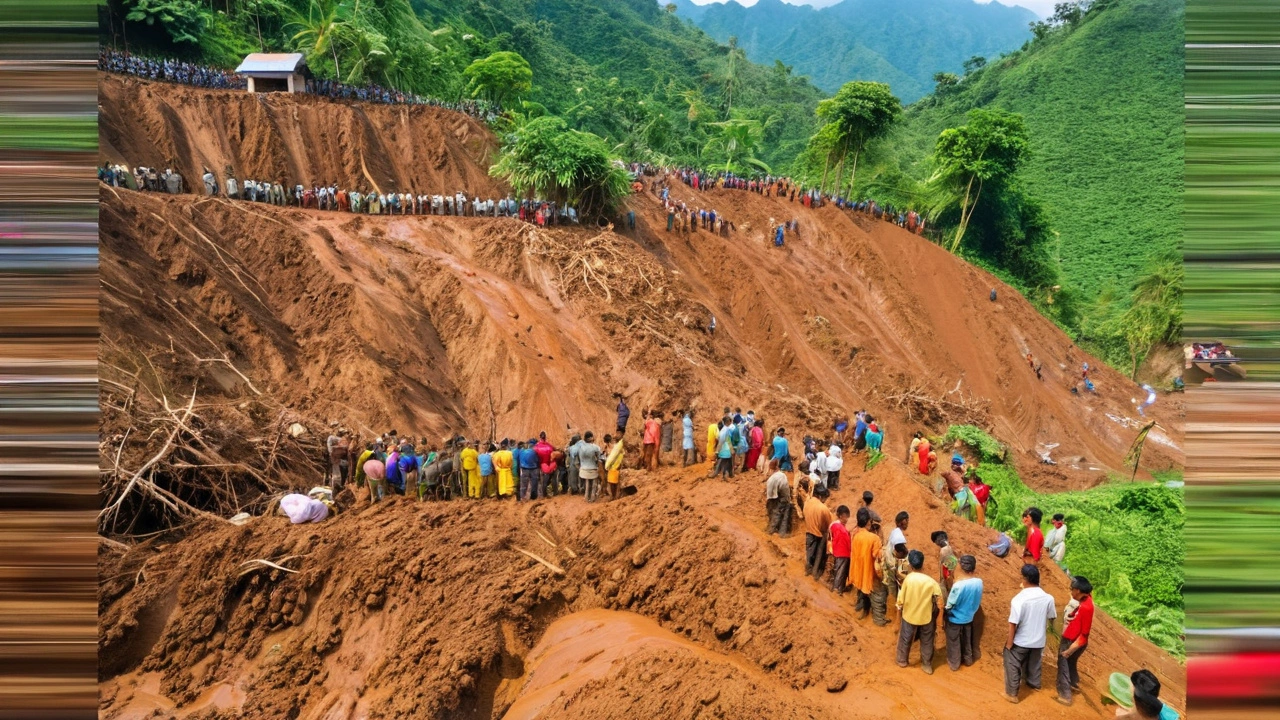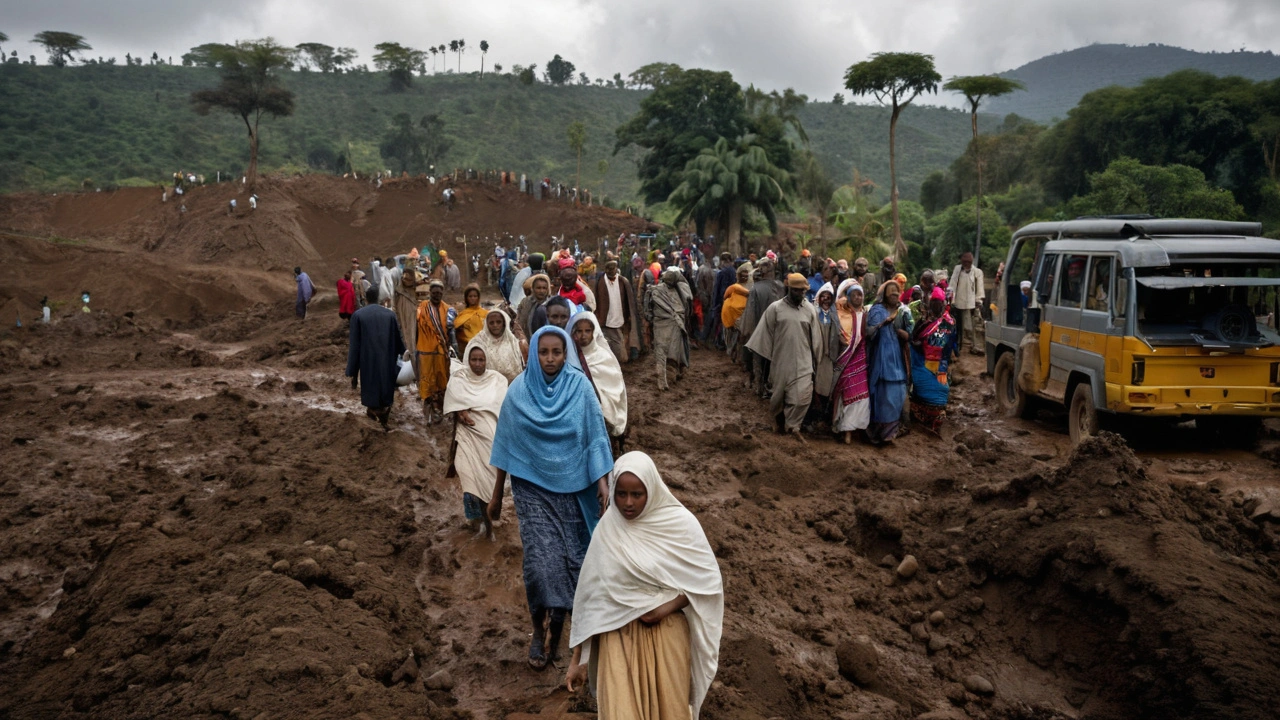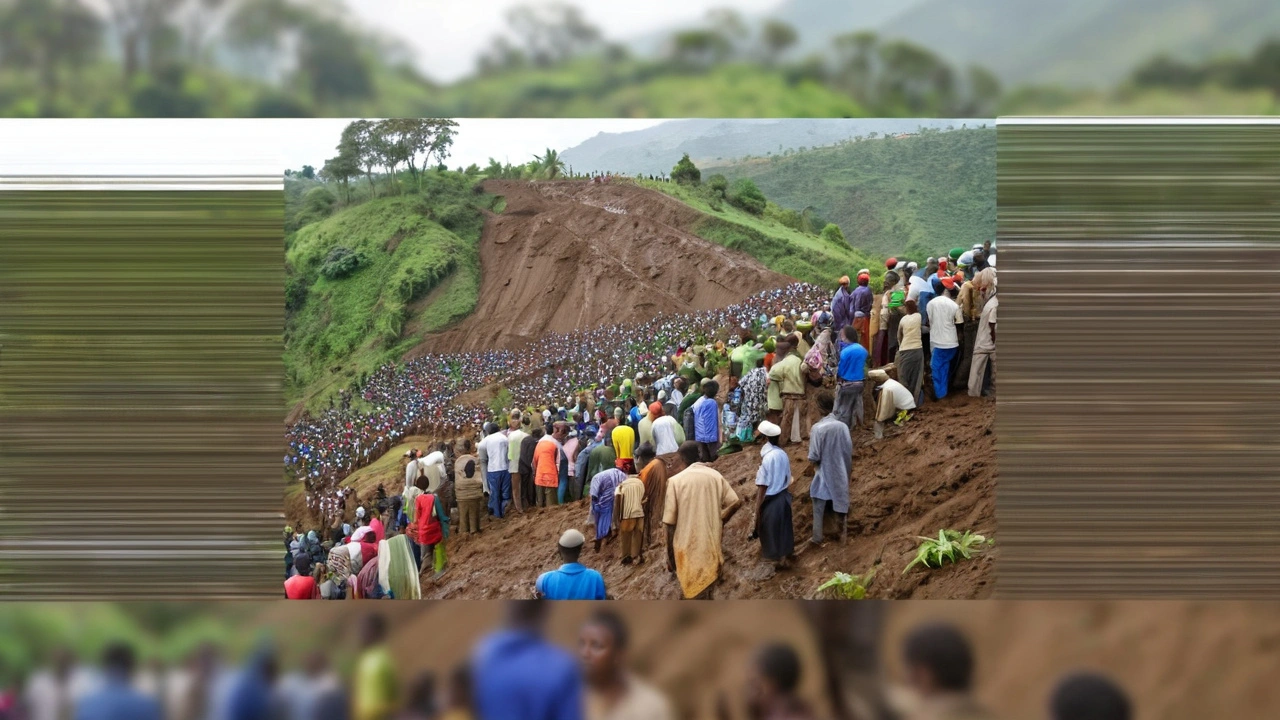Tragic Mudslides Wreak Havoc in Oromia Region
The relentless downpour in Ethiopia’s Oromia region has led to catastrophic mudslides, resulting in the tragic loss of at least 257 lives. As the rainfall continues, the mudslides have ravaged several towns and villages, leaving communities in disarray. Rescue efforts are in full swing, though many individuals remain unaccounted for. The Ethiopian government, alongside volunteers, is tirelessly working to find survivors and recover the bodies of those who perished. This calamity has thrown a spotlight on environmental and infrastructural vulnerabilities in the region.
The Search for the Missing Continues
As emergency responders navigate the hazardous conditions created by the mudslides, the search for the missing continues to be a harrowing task. The sheer volume of debris and the inaccessibility of affected areas add to the complexity of rescue operations. Every passing hour is critical as families await news of their loved ones. The deployment of troops to aid rescue efforts underscores the severity of the situation, with every available resource being marshaled to respond to this disaster.
The Impact on Towns and Villages
The mudslides, triggered by heavy rainfalls, have left a trail of destruction in their wake. Entire villages have been engulfed, schools and homes have been obliterated, and the local infrastructure lies in ruins. Roads and bridges, which once connected communities, have been washed away, further hampering rescue and relief efforts. The full extent of the damage is yet to be ascertained, as many areas remain out of reach for rescuers.

Temporary Shelters and Government Assistance
In response to the immediate needs of those displaced, the Oromia regional government has established temporary shelters. These shelters are providing a lifeline, distributing essential supplies such as food, water, and medical assistance to the affected populace. Despite these efforts, the harrowing experiences endured by survivors and the loss of homes and livelihoods remain palpable. Prime Minister Abiy Ahmed has conveyed condolences to the grieving families and has pledged unwavering support to those affected by this natural disaster.
Environmental Factors and Future Concerns
Beyond the immediate impact, the mudslides have stoked concerns over environmental degradation. Deforestation and land degradation in the region have likely exacerbated the severity of the mudslides. This tragedy serves as a stark reminder of the urgent need for sustainable land management practices. Efforts towards reforestation and sustainable agricultural practices are now more critical than ever to mitigate future disasters of this scale.
International Support and Aid
The international community has not turned a blind eye to Ethiopia’s plight. Organizations, including the United Nations, have reached out, offering assistance in the form of funding, supplies, and manpower. This international solidarity is crucial for a comprehensive response to the disaster, helping to provide the resources necessary for recovery and rebuilding efforts.

A Call for Proactive Measures
This devastating event underscores the importance of proactive disaster management strategies. Improved infrastructure, early warning systems, and community preparedness can significantly reduce the impact of such natural disasters. As Ethiopia works towards recovery, these aspects will be critical in building resilience against future calamities.
Conclusion
The mudslides in Ethiopia’s Oromia region are a stark reminder of nature’s fury and the profound impact of environmental degradation. As rescue efforts continue and the community begins the arduous task of rebuilding, the focus on sustainable land management and improved disaster response strategies must be at the forefront of future planning. The resilience of the Ethiopian people, coupled with national and international support, will be pivotal in overcoming this tragedy.

Phil Wilson
July 26, 2024 AT 21:37The geotechnical instability that precipitated the Oromia mudslides underscores a critical lapse in watershed management protocols. Accurate hydrologic modeling could have forecasted the runoff volumes, allowing pre‑emptive evacuations. Integrating remote sensing data with community‑level early warning systems is now non‑negotiable.
Roy Shackelford
July 27, 2024 AT 05:57While some blame the weather, the real culprit lies in the hubris of policymakers who ignore indigenous land stewardship. Their misplaced faith in short‑term development has sowed the very disaster we now witness.
Karthik Nadig
July 27, 2024 AT 14:17🔴 The globalist agenda thrives on chaos like this – engineered floods to keep nations weak! 😱 Every rainstorm is a proof‑point of the hidden cabal’s climate manipulation program.
Charlotte Hewitt
July 27, 2024 AT 22:37Honestly, they’ve been hiding the real cause for ages. The deforestation wasn’t natural; it’s a covert operation to make us dependent on foreign aid.
Jane Vasquez
July 28, 2024 AT 06:57Wow, yeah because the world *just* decided to forget about Ethiopia while we binge‑watch dramas. 🙄 If only everyone cared about A‑list celebrities instead of real human suffering.
Hartwell Moshier
July 28, 2024 AT 15:17Rescue crews are doing their best.
Jay Bould
July 28, 2024 AT 23:37Sending love from across the seas – these kinds of tragedies remind us how interconnected our world truly is. If anyone can share a recipe for resilient community building, I’m all ears. Let’s lift each other up.
Mike Malone
July 29, 2024 AT 07:57It is a solemn reminder that humanity’s hubris is frequently measured against the unforgiving metrics of nature; the recent mudslides in Oromia have rendered that fact unmistakably clear. The deluge, precipitated by an unprecedented sequence of atmospheric anomalies, has exposed a cascade of systemic failures – from inadequate land‑use planning to the erosion of traditional ecological knowledge. When we consider the hydrological budget of the region, the intensity of the precipitating event far exceeded the design thresholds of existing infrastructure, thereby precipitating catastrophic slope failures. Moreover, the lack of a coordinated early‑warning architecture meant that vulnerable populations were deprived of crucial evacuation time, compounding the tragedy. In the realm of disaster risk reduction, this episode underscores the necessity of integrating multidisciplinary expertise – geomorphology, climatology, and sociocultural dynamics – into a unified response framework. The international community’s swift mobilization of aid, while commendable, must be complemented by sustained investment in resilient rebuilding, including the reinforcement of transport corridors and the reforestation of denuded catchments. Equally vital is the empowerment of local stakeholders, whose indigenous practices can inform adaptive land‑management strategies that mitigate future slide susceptibility. As scholars and practitioners, we are called upon to interrogate the policy vacuum that allowed such devastation to unfold, advocating for legislative reforms that prioritize environmental stewardship. The path forward demands not only bricks and mortar, but also an ethical commitment to safeguard the most vulnerable against the caprices of climate variability.
Pierce Smith
July 29, 2024 AT 16:17In light of the recent events, it becomes evident that a balance between formal protocol and genuine empathy is essential. While official statements provide structure, the human element drives true solidarity.
Abhishek Singh
July 30, 2024 AT 00:37Sure, let’s just wait for the next ‘miracle’ from the same folks who ignored the warnings.
hg gay
July 30, 2024 AT 08:57My heart goes out to every family affected – the loss, the uncertainty, the endless nights of waiting. 😢 It’s hard to find words that capture the depth of this sorrow, but we can offer our support in whatever form we can. Whether it’s donating supplies, spreading awareness, or simply sending a heartfelt message, every act matters. Let’s also remember the volunteers who risk their lives daily, navigating treacherous terrain to rescue strangers. Their bravery deserves our gratitude and sustained backing. 🌍 Together, we can help rebuild not just houses, but hope.
Owen Covach
July 30, 2024 AT 17:17Crazy how quickly things can turn – one minute skies are clear, the next you’re wading through mud. No punctuation needed, just feels.
Pauline HERT
July 31, 2024 AT 01:37Another day, another crisis. If only the world would focus on *real* priorities.
Ron Rementilla
July 31, 2024 AT 09:57Curious how these disasters expose gaps in global preparedness; perhaps a more systematic approach could reduce casualties.
Chand Shahzad
July 31, 2024 AT 18:17Let’s channel our collective energy into concrete actions – reforestation, infrastructure upgrades, and community training. Together, we can foster resilience and ensure that such tragedies are mitigated in the future.
Eduardo Torres
August 1, 2024 AT 02:37Optimism is our best tool; by supporting each other we’ll rebuild stronger than before.